Every major player in the Windows 30commercial enterprise has a 2-in-1 computer in recent times. Lenovo’s Yoga line has been very successful, the HP Spectre x360 I lately reviewed is an great product, and now Dell has hopped at the train with the XPS 13 2-in-1. Announced at CES 2017, the XPS 13 2-in-1 has a clunky name, however it brings a 360-degree hinge to Dell’s most popular ultraportable for the primary time.
Many of the functions we’ve come to like about the XPS 13 are carried over to the XPS 13 2-in-1. The bezels round 3 sides of the 13.3-inch show are very narrow, leading to a outstanding viewing revel in. The carbon fiber keyboard surround, as well as the keyboard and trackpad itself, are basically equal to the XPS thirteen. It’s a similar weight (1.24kg) and thickness (13.7mm) as well, if slightly slimmer and extra transportable than its fixed-computer brother.
- Lenovo ThinkPad T450s Laptop Review
- Averatec N3400 13.3" Ultraportable Notebook Review
- HP Folio 13 Ultrabook Review
- HP ProBook 6360b Notebook Review
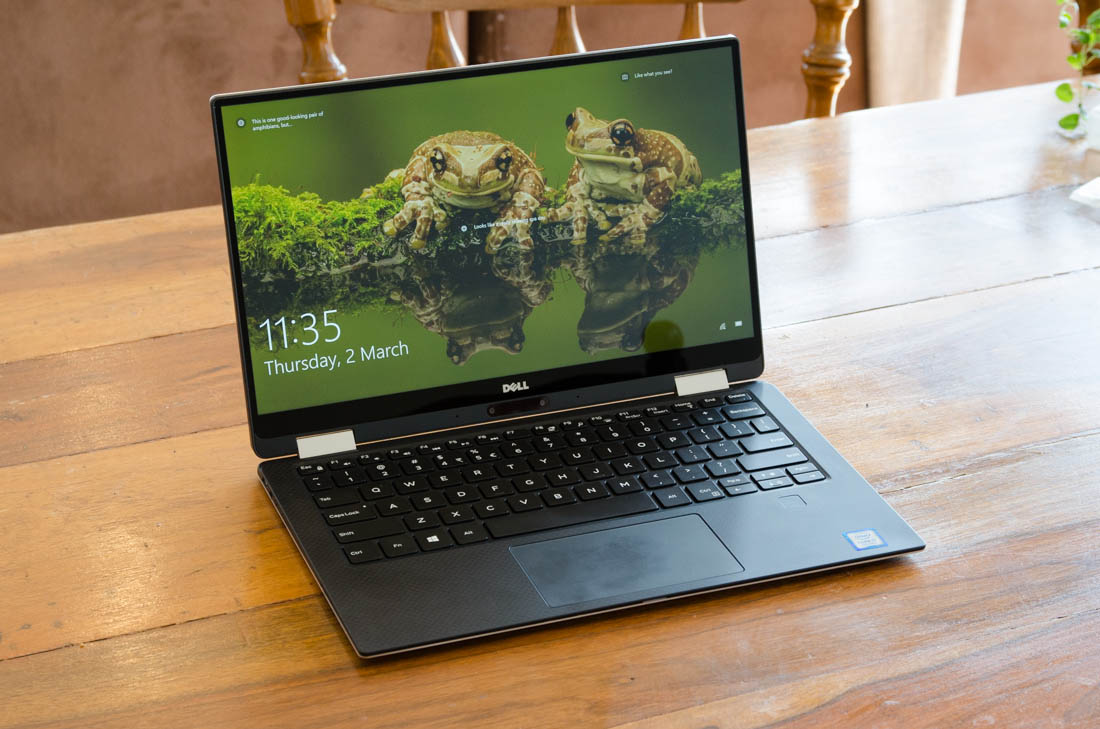
Where the XPS thirteen 2-in-1 differs drastically is within the hardware. Dell has changed the 15W Kaby Lake U-collection processors with four.5W Y-collection parts, leading to lower performance than the XPS thirteen. There’s additionally no USB-A ports on this device; you get a unmarried Thunderbolt 3 USB Type-C port, and a further USB-C port.
While USB-C is the future, it’s nonetheless beneficial to have the greater widely used USB-A port on cutting-edge-gen laptops.
The HP Spectre x360 is a comparable thickness to the XPS thirteen 2-in-1, however it manages to percent a USB-A port alongside two Thunderbolt three ports. For humans that depend on older USB peripherals, you’ll need to get used to dongle life with the XPS 13 2-in-1. It’s additionally exciting to look Dell choose a microSD card slot on this computer, which isn't always nearly as useful as the overall-sized SD slot at the normal XPS 13.
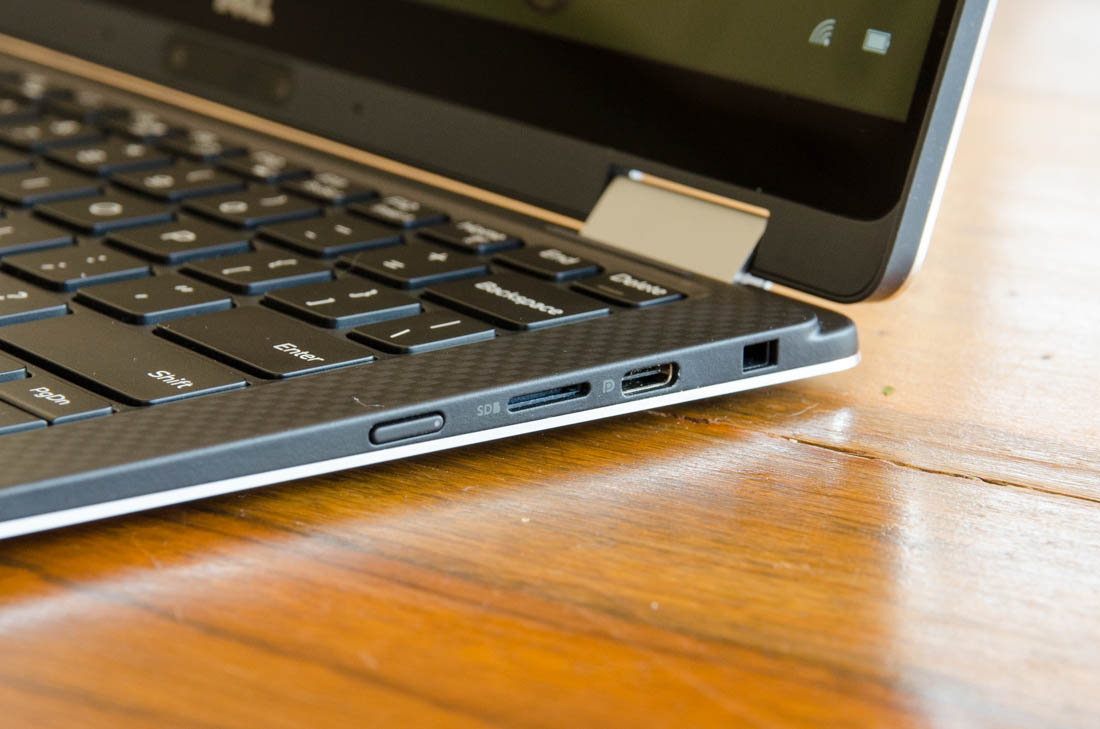
Connectivity isn't always the primary speakme point approximately this laptop, even though.
The key function is, of course, the 360-degree hinge that lets in the XPS 13 for use as both a laptop and a tablet.
Like many similar convertibles, it’s clean that the XPS 13 2-in-1 is a pc first. You’ll probably spend the most time using this tool as a computer, so Dell has spent maximum of its time perfecting this use case. The keyboard is excellent, with a high-quality format (aside from the cramped arrow keys), amazing tour distance, and high-quality tactile remarks. You get useful features connected to the F-keys, and serviceable backlighting.
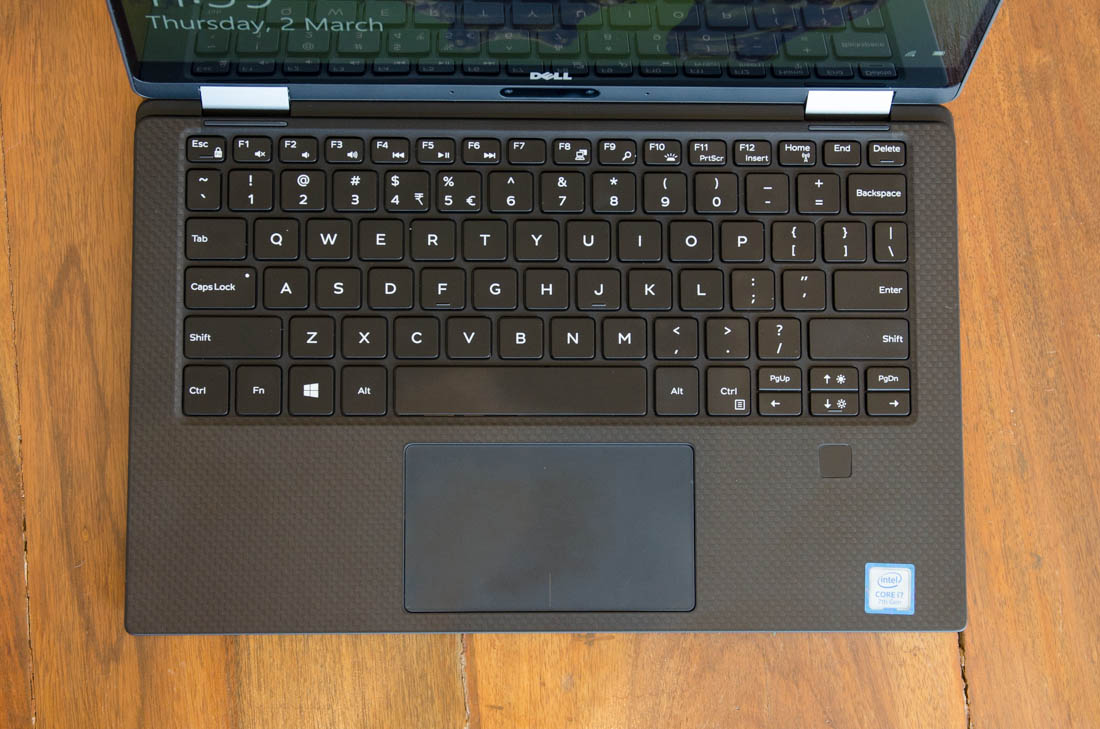
The trackpad is any other highlight of the XPS 13 2-in-1’s laptop revel in. This is the first-class Windows laptop trackpad I’ve used. It's extraordinarily responsive and correct with monitoring and gestures, and it’s additionally made of a easy fabric that helps your finger go with the flow across the surface.
Flipping the pc round into its tablet mode revealed several issues with this use case.
With massive gaps around the rims because of the XPS 13 2-in-1’s tapered edges, the device doesn't feel like a tablet to hold. It feels more like a show and keyboard base awkwardly sandwiched together, an difficulty compounded through how you could touch the keys at the rear of the ‘pill’ all through use. However, the only convertible Ive used that does not have this difficulty is the Lenovo Yoga Book, and I wouldn't suggest it for different reasons.
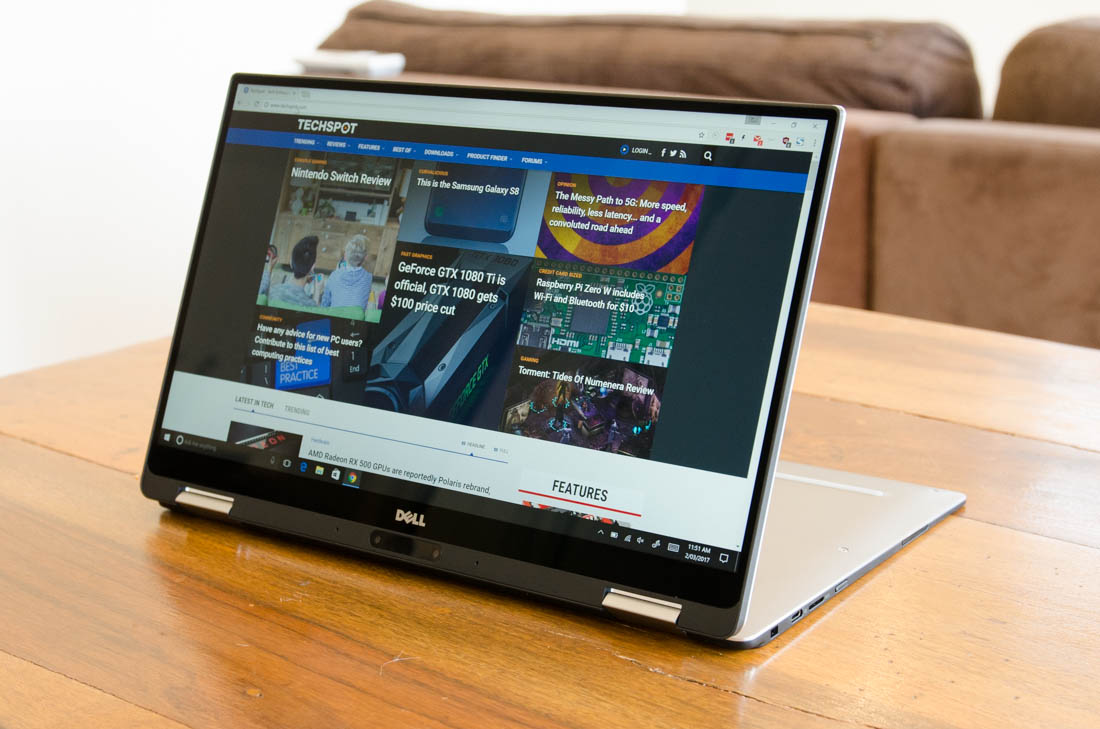
One of the greater evident issues with the XPS thirteen 2-in-1 is a entire lack of auto-rotation. I without a doubt don't have any idea how a tool designed for use as a tablet could be constructed without an accelerometer. This means that in case you want to keep the tablet in a portrait orientation, or use it in tent mode – both usage modes are marketed by way of Dell – you need to manually alternate the display rotation the usage of Windows settings. This is a large oversight for a convertible.
On a greater positive note, in spite of extraordinarily thin bezels, Dell’s touchscreen palm rejection era is very good. I had no problem maintaining and operating the XPS 13 2-in-1 as a pill, despite the fact that in most conditions my hands were partly at the show. Slightly bigger bezels could supply a better pill experience, even though you’ll realistically be the use of the laptop mode extra regularly, wherein larger bezels wouldn't be as high-quality.
So like many different hybrid laptops on the market, the XPS thirteen 2-in-1’s non-computer utilization modes are largely a secondary, on occasion-reachable addition. Showing people documents inside the pill mode, or viewing videos in the stand mode, are neat rare use cases, but in the long run you’ll be the use of it as a pc most of the time. If you wanted some thing that’s tablet first, you’re better off buying simply that: a skinny, extraordinarily transportable pill; rather than fiddling around with this 2-in-1’s much less than perfect tablet form component.
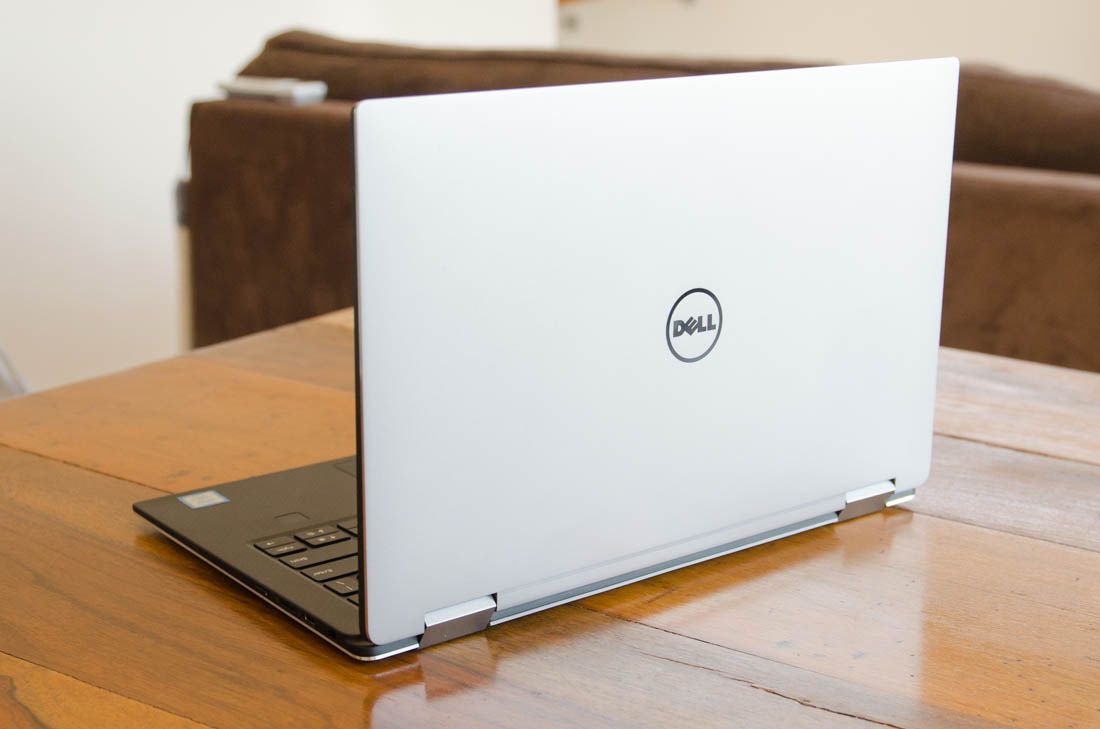
When the usage of the XPS thirteen 2-in-1 as a pc, there are several other elements that I liked. The fingerprint sensor, positioned under the arrow keys, is very responsive and works flawlessly with Windows Hello. More laptops have to have this option.
The build high-quality is likewise extraordinary. The smooth-contact carbon fiber palm rest is a bit of a fingerprint magnet, but it feels fantastic at the same time as typing.
The rest of the chassis is built the usage of top rate aluminum that looks elegant, whilst the aluminum-wrapped metallic hinges are tough and exhibit little wobble. The layout in standard is very similar to the touchscreen XPS thirteen, which already appears attractive with its industrial metallic layout and smooth Gorilla Glass show.
Display
Included with the XPS thirteen 2-in-1 is either a 13.three-inch 1920 x 1080 or 3200 x 1800 “InfinityEdge” IPS LCD. These are essentially the identical displays as included with XPS 13. My Laptopunit came with the top-spec 3200 x 1800 QHD+ display, which packs terrific clarity thanks to a pixel density of 276 PPI, and extremely good viewing angles.
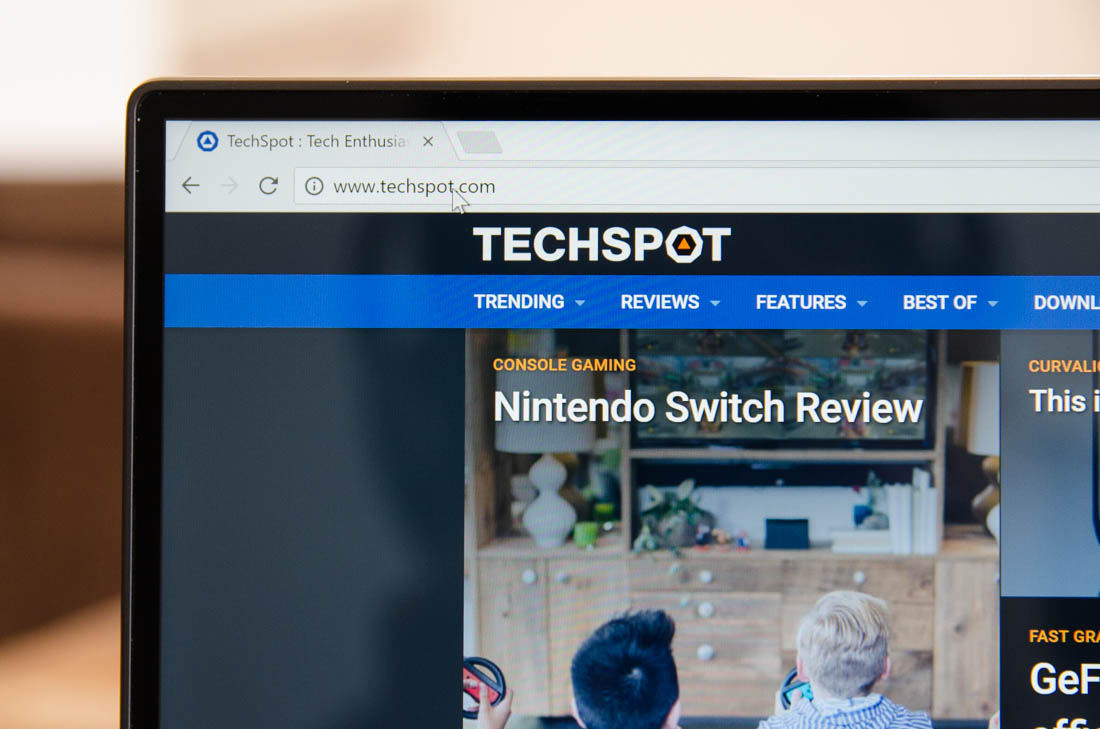
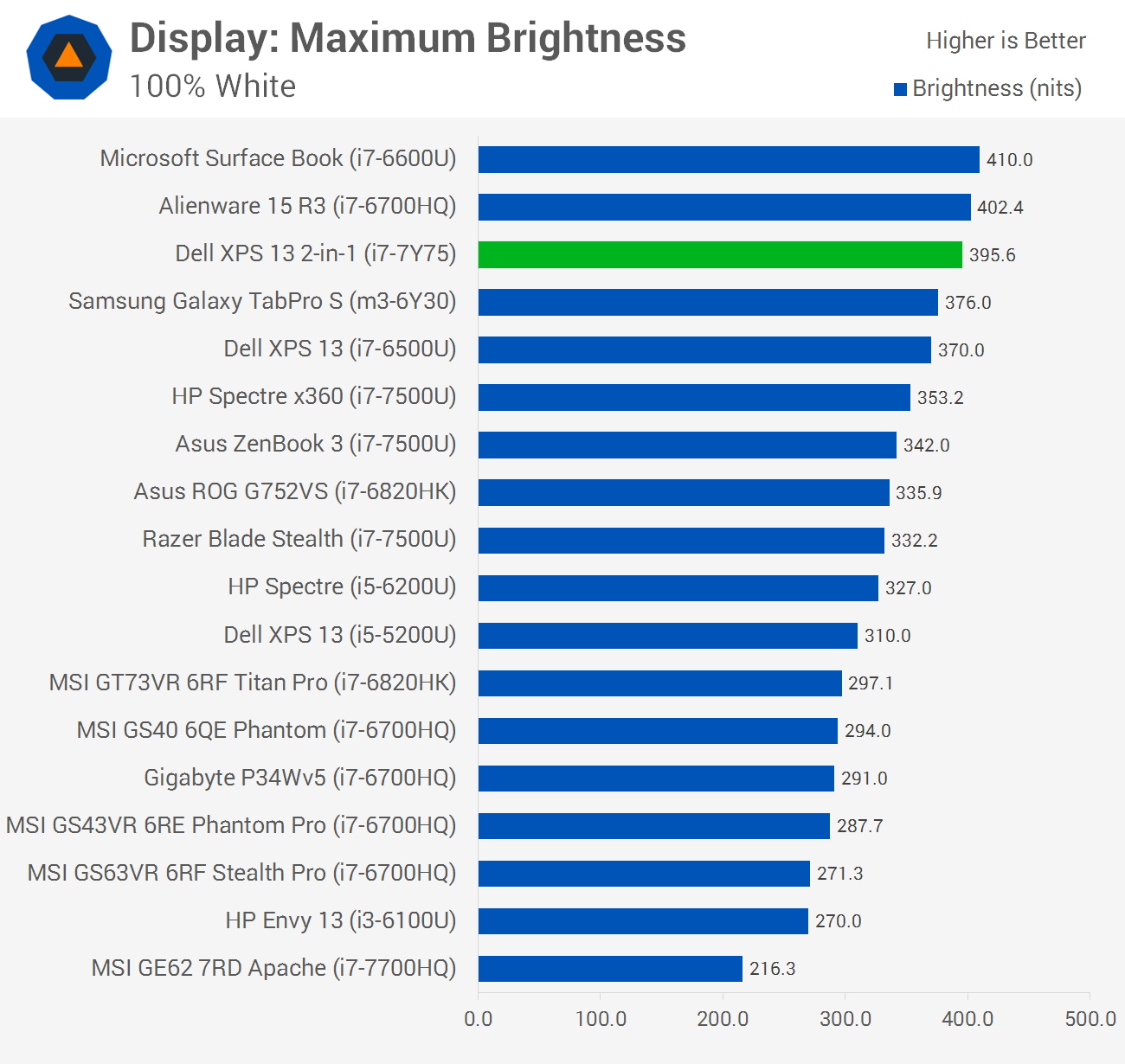
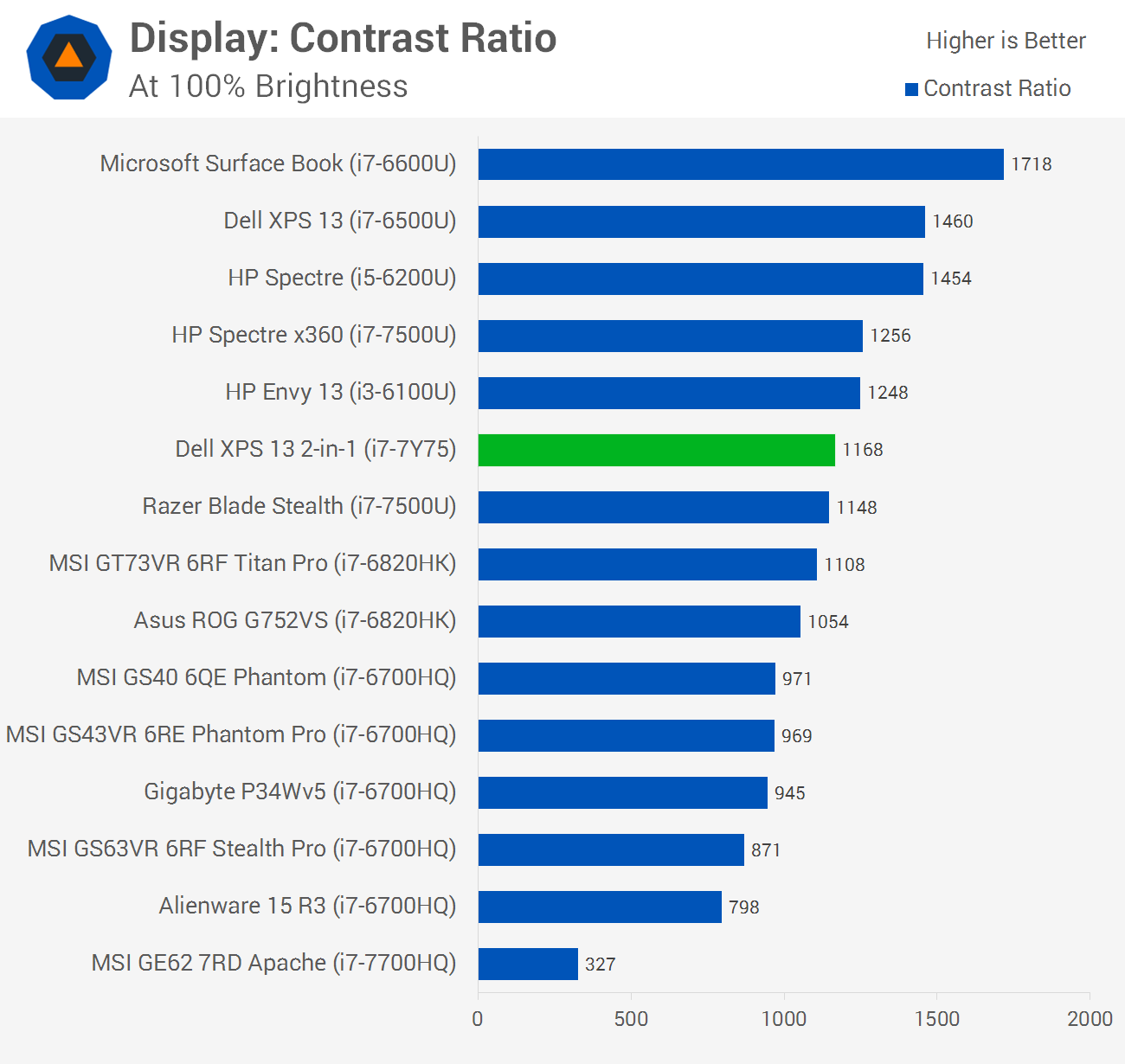
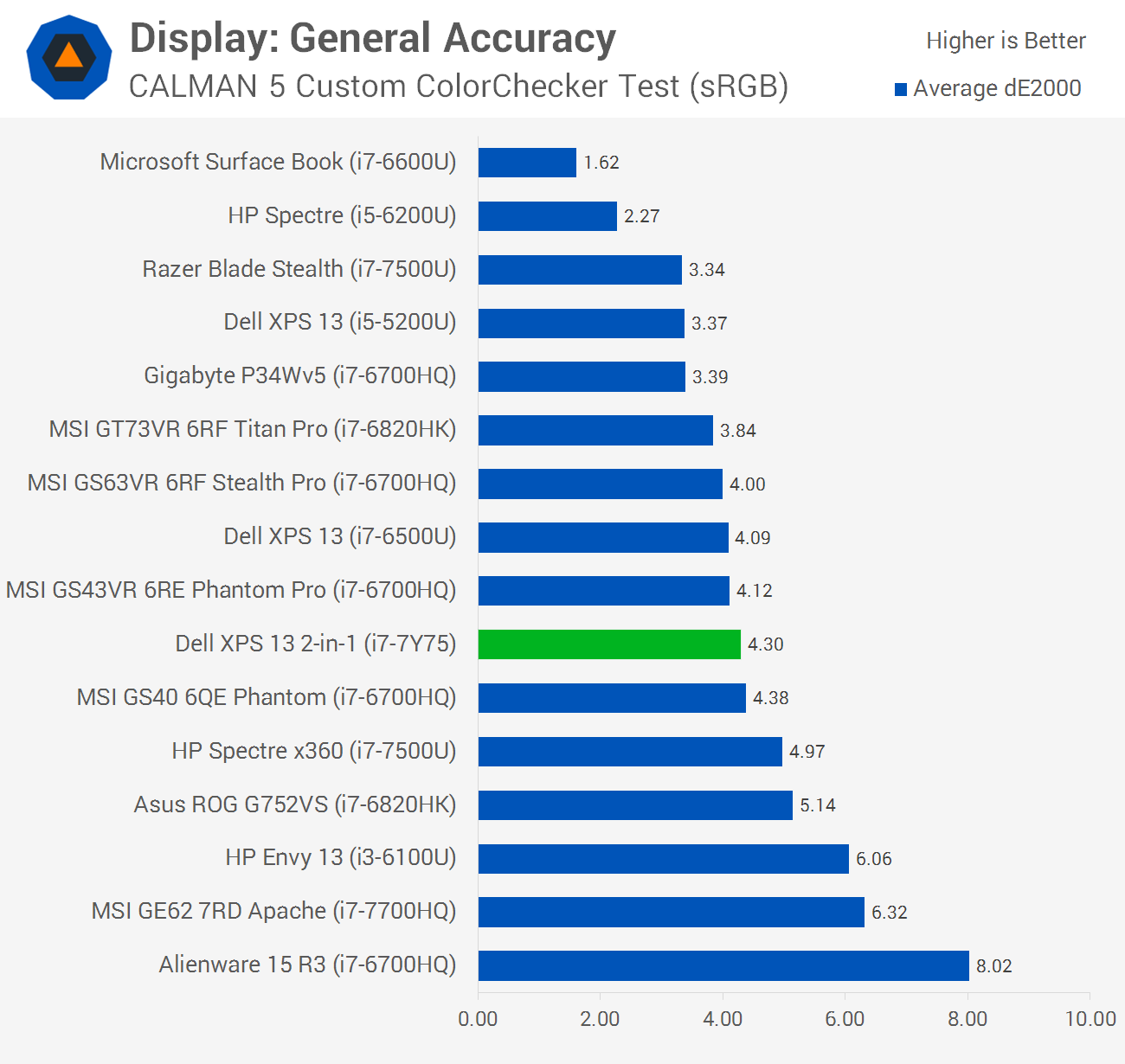
It changed into a touch difficult to well benchmark the XPS 13 2-in-1’s display because of dynamic contrast changes that could’t be disabled within the device’s software. Some of the above figures aren’t as correct as I’d like for the XPS thirteen 2-in-1, but it does come up with a few concept of ways the laptop’s display compares to similar laptops available on the market.
We’re seeing amazing levels of brightness, at nearly 400 nits, even though this does lower (thanks, dynamic evaluation) while you’re now not viewing a in the main-white show. Contrast stages at this height brightness are roughly 1100:1, with relatively right (although now not perfect) colour temperature. Color performance is fairly better than the HP Spectre x360, and whilst it’s no longer as perfect to creative specialists as the Surface Book, it does a very good sufficient process for casual content material creators.
0 Response to "Dell XPS 13 2-in-1 Review"
Post a Comment